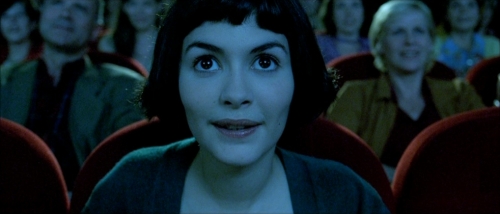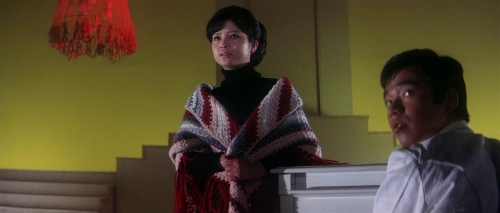10/3 - Colour Theory in Film
- 2004946
- Mar 10, 2022
- 4 min read
Updated: Mar 14, 2022
I have already made posts about the psychology behind colour, and how different colours can effect people’s mood, but I thought I would do more research into how it is used in films. And touch on how different directors implement colour techniques into their own.
Colour schemes in film are accomplished through lighting on the set, filtration, adding a look or LUT to the camera while shooting, or with colour correction in post.
Colour can affect us psychologically, emotionally and even physically, often without us being aware. Colour can be used to create harmony or tension within a scene, or to bring attention to a key visual theme.
Red seems to be the colour we have the strongest reaction to, but where one might use it as a depiction of hate and cruelty, another may use it to show passion and love
There are no set guidelines to say ‘this is how you use colour’, but understanding the cognitive effects of it does help. Ultimately the viewers reaction to a colour is how it’s defined in a film.
There are three key elements to any colour:
Hue - the colour itself ( Yellow? Red? Green?)
Saturation - the intensity of the colour (It is vibrant or is it a faded paler colour)
-using desaturated colours give a gritty, cold and raw look, taking us back in time. The more desaturated something is the closer it is to grey
Value - how light or dark the colour is (‘brightness’)
Types of Colour Schemes:

Monochromatic Scheme:
A monochromatic colour scheme is when a single colour is used throughout, and is extended out using shades, tones, and tints.
As these scenes use only one colour, it is best for single subjects because it forces the viewer to focus on the details of the image.
For example: The Matrix uses a green monochromatic colour scheme, to represent events that happened inside the computer simulation, but also giving a sickly feeling to the film.
Scenes from The Matrix (1999)
Other examples of monochromatic colour schemes:
Left to right: The Grand Budapest Hotel, Three Colours: Red, Three Colours: White, Three Colours: Blue.
Complementary Scheme:
Two colours on opposite sides of the colour wheel make a complementary pair, and is the most commonly used pairing. (This is also the main colour scheme used in The Lion King).
Orange and blue/teal is the most common pairing, as using a warm colour with a cool colour produces a high contrast and vibrant result. Complimentary pairs are often quite naturally pleasing to the eye.
Jean-Pierre Jeunet’s Amelie (2001), is a really good example of the use of a green and red complementary colour scheme:
Scenes from Amelie (2001)
Other examples of complementary colour schemes:
Left to Right: Mad Max: Fury Road, Spiderman: Homecoming, Superman, Temple of Doom, Kong: Skull Island, Death Becomes Her, Batman & Robin, Hocus Pocus.
Analogous scheme:
Analogous colours neighbour each other on the colour wheel, and are usually found in nature. Which is why analogous colour schemes are easy on the eyes, and create a relaxing atmosphere in scenes.
For Example: Blade Runner 2049 uses an analogous colour scheme. Using orange yellow and red together to suggest mystery, exploration, but also danger and action
Scenes from Blade Runner 2049 (2017)
Wes Anderson is an example of a director that uses colour schemes in his work really well, he uses greens, browns and yellows in Moonrise Kingdom (2012) really well, so they don’t contrast each other, so it’s easier to look at. He uses an analogous colour scheme to create a calming effect, that matches the films nostalgic tone
Scenes from Moonrise Kingdom (2012)
Other examples of analogous colour schemes:
From Left to Right: American Hustle, Black Panther, Fantastic Mr Fox, Batman & Robin, Avatar, Alice in Wonderland, Traffic.
Triadic scheme:
Triadic colour scheme means all the colours are equal distance on the colour wheel, making it appear that there is no clear colour scheme. This balance creates the atmosphere, making the rules of the world all the more believable
Scenes from Pierrot Le Fou (1965)
Other examples of triadic colour schemes:
Left to Right: Superman, Spiderman: Homecoming, And God Created A Woman.
Discordance:
When you throw in a colour that doesn’t look like it’s supposed to be, this creates discordance. Sometimes this means having one saturated colour that doesn’t quite fit in. This can intentionally make the audience’s eyes look towards something.
Introducing a new colour to a scene, can show that the mood of a film has been unsettled.
Examples of discordance in films:
Left to Right: 2001: Space Odyssey, Pleasantville, Sixth Sense, Batman Returns, Batman, Amelie, Tokyo Drifter.
Conclusion:
It was interesting learning about different colour schemes used in films, and how they have an effect on how the film is presented. Moving forward, I would like to try and include some of these colour schemes into my own work, to make the audience react to my film in the way I want.
References:
StudioBinder (2018), YouTube, Color Theory in Film — Color Psychology for Directors: Ep5, Available at: https://www.youtube.com/watch?v=lINVnA3rVIE (Accessed 10/3/22)
Lackey, R (2015), Cine D, 5 Common Film Color Schemes – Learning Cinematic Color Design, Available at: https://www.cined.com/film-color-schemes-cinematic-color-design/ (Accessed 10/3/22)
Fusco, J (2016), No Film school, Available at: https://nofilmschool.com/2016/06/watch-psychology-color-film (Accessed 9/3/22)
CONEMATICJ (2017), YouTube, COLOR THEORY for Filmmakers, Available at: https://www.youtube.com/watch?v=E8X9TwaKxzM (Accessed 10/3/22)
The Cinema Cartography (2015), YouTube, Colour In Storytelling, Available at: https://www.youtube.com/watch?v=aXgFcNUWqX0&t=274s (Accessed 10/3/22)
Brown, B, (2016), Cinematography: theory and practice: image making for cinematographers and directors, 3rd ed. Routledge, Taylor & Francis Group, New York, pp. 116-124




















































































































































































Comments